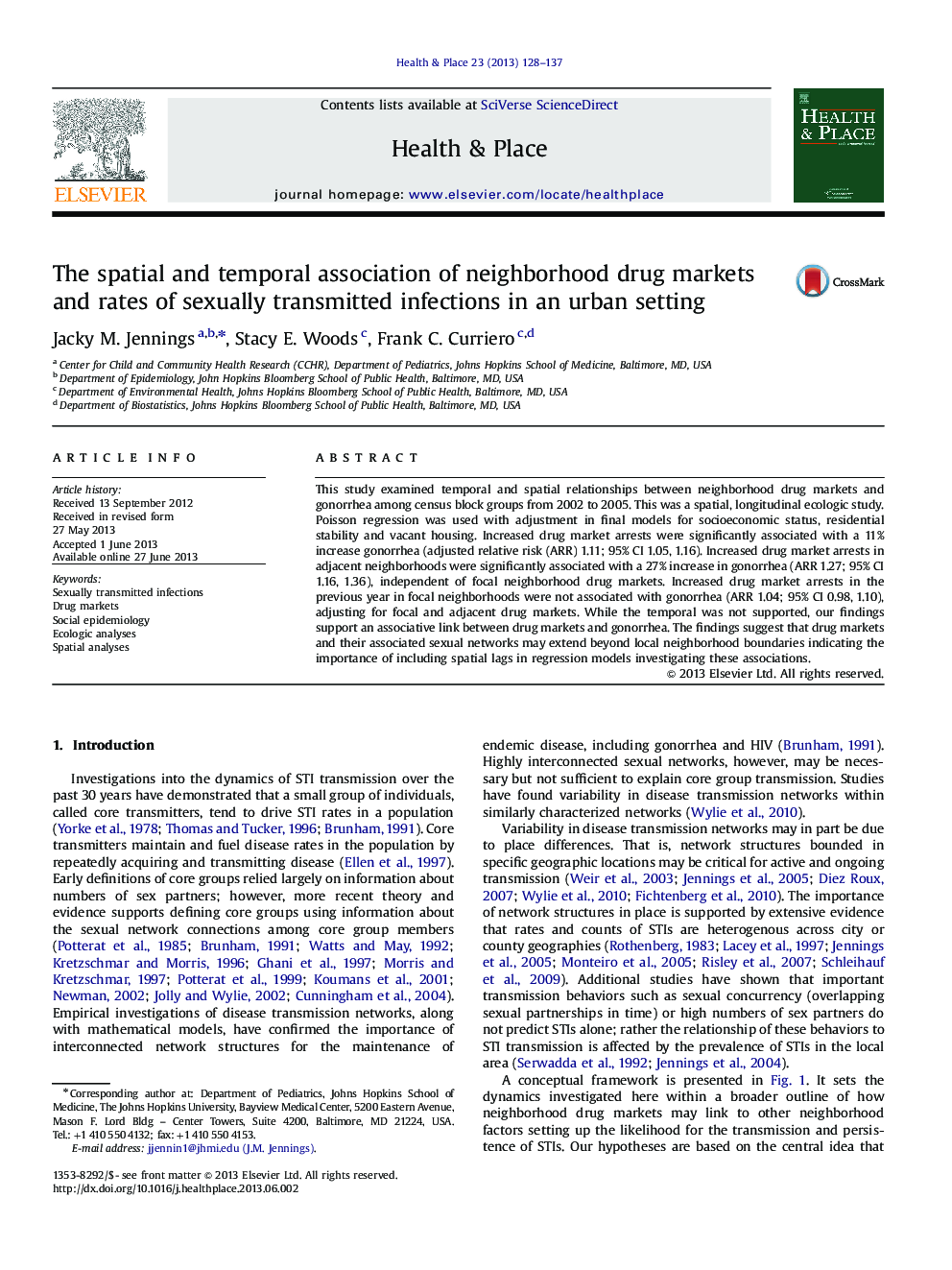| Article ID | Journal | Published Year | Pages | File Type |
|---|---|---|---|---|
| 7459002 | Health & Place | 2013 | 10 Pages |
Abstract
This study examined temporal and spatial relationships between neighborhood drug markets and gonorrhea among census block groups from 2002 to 2005. This was a spatial, longitudinal ecologic study. Poisson regression was used with adjustment in final models for socioeconomic status, residential stability and vacant housing. Increased drug market arrests were significantly associated with a 11% increase gonorrhea (adjusted relative risk (ARR) 1.11; 95% CI 1.05, 1.16). Increased drug market arrests in adjacent neighborhoods were significantly associated with a 27% increase in gonorrhea (ARR 1.27; 95% CI 1.16, 1.36), independent of focal neighborhood drug markets. Increased drug market arrests in the previous year in focal neighborhoods were not associated with gonorrhea (ARR 1.04; 95% CI 0.98, 1.10), adjusting for focal and adjacent drug markets. While the temporal was not supported, our findings support an associative link between drug markets and gonorrhea. The findings suggest that drug markets and their associated sexual networks may extend beyond local neighborhood boundaries indicating the importance of including spatial lags in regression models investigating these associations.
Related Topics
Health Sciences
Medicine and Dentistry
Public Health and Health Policy
Authors
Jacky M. Jennings, Stacy E. Woods, Frank C. Curriero,
